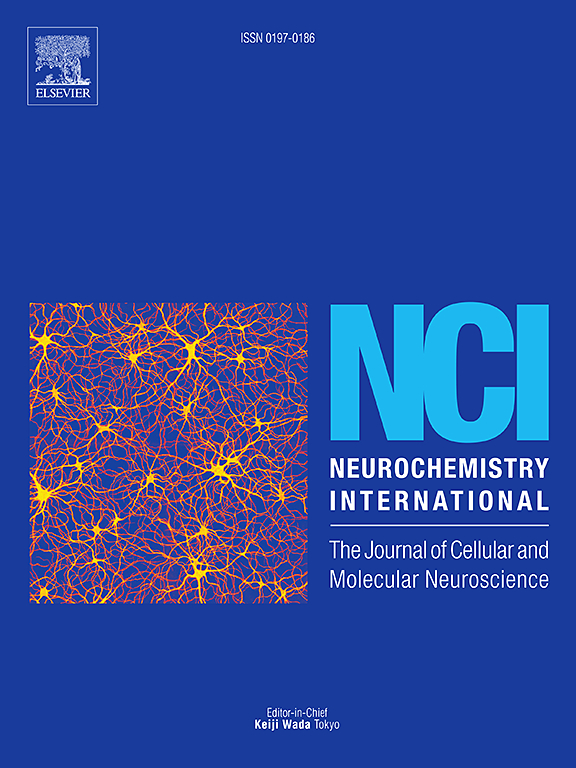lenox - gastaut综合征的循环代谢组学改变:与临床放射学严重程度的相关性
IF 4
3区 医学
Q2 BIOCHEMISTRY & MOLECULAR BIOLOGY
引用次数: 0
摘要
lenox - gastaut综合征(LGS)是一种癫痫性脑病,其特征是多种类型的癫痫发作,通常发生在1至7岁之间,伴有认知障碍和特征性脑电图异常。循环代谢组学分析可能有助于了解这些患者持续的代谢途径异常,但目前还没有这样的研究。我们报告了基于核磁共振的LGS代谢组学特征及其与临床严重程度、核磁共振变化和脑电图结果的关联。根据临床和脑电图诊断标准纳入2-18岁的LGS儿童。测量详细的神经学检查、癫痫发作的频率和类型、脑电图变化、颅脑MRI和基于核磁共振的血清代谢组学特征。采用临床整体损害严重程度量表(CGI-S)评定LGS的严重程度。纳入26例LGS患者和11例健康匹配对照。患者的中位年龄为6岁(范围2-17岁),男性19例。他们的CGI-S评分中位数为6分,并且都有不止一种类型的癫痫发作。乳酸、葡萄糖、谷氨酸、丙酮酸、谷氨酰胺、甘氨酸、柠檬酸和肌酐是LGS与对照组区分的关键代谢物,其中谷氨酸上调,柠檬酸、丙酮酸和谷氨酰胺下调。谷氨酸与发育商相关(r = -0.48),丙酮酸与局灶性癫痫发作相关(r = 0.47),头颅MRI显示的囊性脑软化相关(p = 0.02)。核磁共振代谢组谱包括谷氨酸、谷氨酰胺、甘氨酸、葡萄糖、丙酮酸、乳酸、柠檬酸和肌酐,可以将LGS与对照组区分开来。抗谷氨酸能药物的作用可能有利于控制癫痫发作,有待进一步研究。本文章由计算机程序翻译,如有差异,请以英文原文为准。

Circulating metabolomic changes in Lennox-Gastaut syndrome: correlation with clinico-radiological severity
Lennox-Gastaut syndrome (LGS) is an epileptic encephalopathy characterized by multiple types of seizures typically occurring between 1 and 7 years of age, cognitive impairment and characteristic electroencephalographic abnormalities. Circulating metabolomic profile may give insight into the ongoing metabolic pathway abnormalities in these patients, but there is no such study. We report NMR based metabolomic profile in LGS and its association with clinical severity, MRI changes and EEG findings. LGS children between 2 and 18 years were included based on clinical and EEG diagnostic criteria. Detailed neurological examinations, frequency and type of seizures, EEG changes, cranial MRI and NMR based serum metabolomic profile were measured. The Clinical Global Impairment Severity Scale (CGI-S) was used to rate severity of LGS. Twenty-six LGS patients and 11 healthy matched controls were included. The median age of the patients was 6 (range 2–17) years, and 19 were males. Their median CGI-S score was 6, and all had more than one type of seizures. Seven metabolites namely lactate, glucose, glutamate, pyruvate, glutamine, glycine, citrate and creatinine were crucial for discrimination of LGS from the controls, among which glutamate was upregulated and citrate, pyruvate, and glutamine were down regulated in LGS. Glutamate associated with developmental quotient (r = −0.48) and pyruvate with focal seizures (r = 0.47) and cystic encephalomalacia on cranial MRI (p = 0.02). NMR metabolomic profile including glutamate, glutamine, glycine, glucose, pyruvate, lactate, citrate and creatinine can discriminate LGS from the controls. Role of antiglutamatergic drugs may be beneficial in controlling seizures, and needs future study.
求助全文
通过发布文献求助,成功后即可免费获取论文全文。
去求助
来源期刊

Neurochemistry international
医学-神经科学
CiteScore
8.40
自引率
2.40%
发文量
128
审稿时长
37 days
期刊介绍:
Neurochemistry International is devoted to the rapid publication of outstanding original articles and timely reviews in neurochemistry. Manuscripts on a broad range of topics will be considered, including molecular and cellular neurochemistry, neuropharmacology and genetic aspects of CNS function, neuroimmunology, metabolism as well as the neurochemistry of neurological and psychiatric disorders of the CNS.
 求助内容:
求助内容: 应助结果提醒方式:
应助结果提醒方式:


